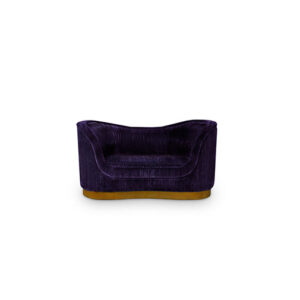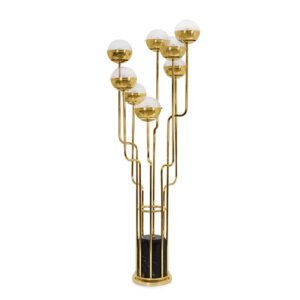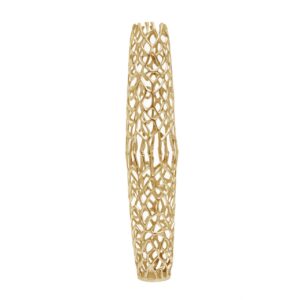Eclectic furniture refers to pieces that blend various styles, materials, and influences to create a unique and personalized look. It’s about mixing and matching different elements to achieve a cohesive yet diverse aesthetic in interior design.The emergence of eclectic furniture as a prominent design trend reflects a shift in contemporary tastes towards more personalized and eclectic interiors. Historically, furniture styles were often associated with specific periods or movements, such as Art Deco, Mid-Century Modern, or Victorian. However, in recent years, there has been a growing appreciation for mixing and matching styles to create spaces that reflect the unique personality and preferences of the homeowner.
This trend can be attributed to several factors, including the rise of social media platforms like Instagram and Pinterest, which have democratized interior design and inspired individuals to experiment with different styles. Additionally, the increasing availability of eclectic furniture pieces from both mainstream retailers and independent artisans has made it easier for consumers to curate eclectic spaces that reflect their personal taste and style.
In this article, we will delve into the allure and versatility of eclectic furniture in contemporary interior design. By examining its defining characteristics, discussing its appeal, and exploring practical tips for incorporating eclectic pieces into various design schemes, we aim to provide readers with a comprehensive understanding of this exciting and dynamic design trend. Through examples, case studies, and expert insights.
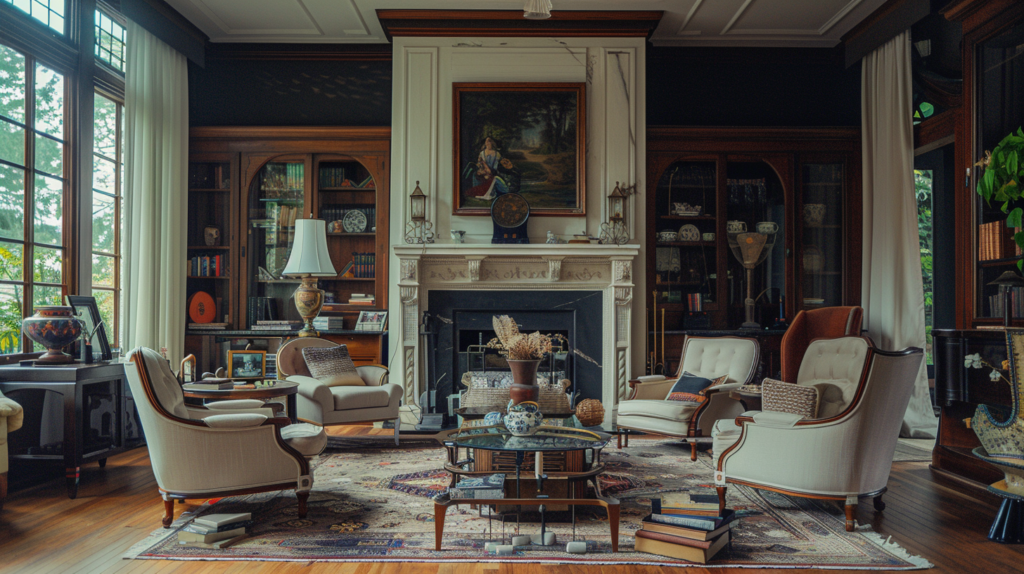
Historical Origins of Eclectic Design
The roots of eclectic design can be traced back to the 19th century, a period marked by significant cultural and artistic shifts. During this time, there was a growing interest in the revival of historical styles, spurred by archaeological discoveries and a fascination with the past. Eclecticism emerged as a response to the rigid conventions of academic design, which emphasized adherence to specific historical periods or artistic movements. In architecture and interior design, the eclectic movement sought to break free from these constraints by blending elements from different styles and periods to create spaces that were both visually captivating and intellectually stimulating. This approach allowed designers to experiment with a diverse range of influences, from ancient Greek and Roman architecture to Gothic, Renaissance, and Baroque aesthetics.
The evolution of eclectic furniture styles has been shaped by a multitude of cultural movements and historical periods, each leaving its mark on the design landscape. For example, the Arts and Crafts movement of the late 19th and early 20th centuries emphasized craftsmanship, simplicity, and the use of natural materials, inspiring furniture makers to create pieces that celebrated traditional craftsmanship and showcased the beauty of wood. Similarly, the Art Nouveau movement, which flourished in the late 19th and early 20th centuries, embraced organic forms, intricate patterns, and decorative motifs inspired by nature. Furniture designers during this period incorporated flowing lines, floral motifs, and exotic woods into their creations, resulting in pieces that exuded elegance and sophistication.
In the mid-20th century, the Mid-Century Modern movement emerged as a response to the austerity of World War II, celebrating simplicity, functionality, and innovation. Furniture designers such as Charles and Ray Eames, Eero Saarinen, and Hans Wegner created iconic pieces that combined sleek lines, geometric shapes, and innovative materials, redefining the notion of modern living. Over time, eclectic furniture has continued to evolve, adapting to changing tastes, technologies, and cultural influences. In the latter half of the 20th century, postmodernism emerged as a rejection of the modernist principles of form follows function, embracing irony, pastiche, and eclecticism. Postmodern furniture designers like Philippe Starck, Ettore Sottsass, and Michael Graves created bold, playful pieces that challenged conventions and pushed the boundaries of design. In the 21st century, eclectic furniture has become synonymous with individuality, creativity, and self-expression. With access to a global marketplace and a wealth of design inspiration at their fingertips, consumers have more freedom than ever to curate eclectic interiors that reflect their unique personalities and lifestyles. From vintage finds and handmade treasures to contemporary classics and one-of-a-kind artisanal pieces, eclectic furniture offers endless possibilities for creating spaces that are as diverse and dynamic as the individuals who inhabit them.
Characteristics of Eclectic Furniture
Diversity in Styles, Materials, and Aesthetics
Eclectic furniture is characterized by its diverse range of styles, materials, and aesthetics. Unlike traditional furniture, which adheres to a specific design style or period, eclectic pieces draw inspiration from various sources, resulting in an eclectic mix of influences. This diversity allows for greater flexibility in design choices, catering to a wide range of tastes and preferences. In terms of styles, eclectic furniture may incorporate elements from different design movements, such as Art Deco, Mid-Century Modern, Industrial, Bohemian, and Scandinavian, among others. This blending of styles creates a dynamic and visually engaging aesthetic that is both timeless and contemporary. Similarly, eclectic furniture embraces a variety of materials, from wood and metal to glass, leather, and fabric. Each material brings its own unique texture, color, and character to the piece, adding depth and interest to the overall design. Whether it’s a sleek metal frame, a rustic wooden surface, or a plush upholstered seat, eclectic furniture celebrates the beauty of material diversity.
Mix-and-Match Approach to Design Elements
One of the defining features of eclectic furniture is its mix-and-match approach to design elements. Rather than adhering to a strict set of rules or conventions, eclectic pieces allow for creative freedom and experimentation. Designers and homeowners alike can play with contrasts, juxtaposing different styles, colors, patterns, and textures to create visually compelling compositions. For example, an eclectic living room might feature a mix of vintage and contemporary furniture pieces, combining a mid-century modern sofa with an antique coffee table and a sleek metal side chair. Similarly, textiles such as rugs, cushions, and curtains can be layered to add warmth and personality to the space, with patterns ranging from bold geometrics to delicate florals. This eclectic approach to design encourages individuals to curate spaces that reflect their unique personalities and interests, resulting in interiors that are as diverse and eclectic as the people who inhabit them.
Emphasis on Creativity, Individuality, and Self-Expression
At the heart of eclectic furniture is an emphasis on creativity, individuality, and self-expression. Eclectic interiors serve as a canvas for personal storytelling, allowing individuals to showcase their tastes, passions, and experiences through their choice of furniture and decor. Unlike mass-produced, cookie-cutter furniture, eclectic pieces often have a sense of character and authenticity, whether it’s a handcrafted artisanal table, a vintage flea market find, or a cherished family heirloom. These pieces tell a story, sparking conversation and adding depth to the space. Furthermore, eclectic furniture celebrates the idea of mixing high and low, old and new, to create spaces that feel curated rather than curated. It encourages individuals to embrace their unique sense of style and to trust their instincts when it comes to design decisions. Ultimately, eclectic furniture empowers people to create interiors that are as distinctive and original as they are, resulting in spaces that are truly one-of-a-kind.

Benefits of Eclectic Furniture in Interior Design
A. Adaptability to Different Design Schemes and Spaces
Eclectic furniture boasts a remarkable versatility, making it well-suited for a wide range of design schemes and spaces. Whether your home is adorned with classic elegance or contemporary chic, eclectic pieces seamlessly integrate into various interior styles, adding layers of character and personality.
In traditional settings, eclectic furniture injects a breath of fresh air, infusing modern elements into timeless designs. For instance, a sleek, minimalist armchair can complement a traditional sofa, creating a harmonious balance between old and new. Similarly, in modern spaces, eclectic furniture adds warmth and depth, breaking up clean lines and adding a touch of eclecticism to the overall aesthetic.
Moreover, eclectic furniture effortlessly adapts to different room sizes and layouts, offering solutions for both compact urban apartments and sprawling suburban homes. From multifunctional pieces that maximize space to statement-making accents that anchor large rooms, eclectic furniture caters to diverse spatial needs, ensuring that every corner of your home feels curated and inviting.
B. Ability to Bridge Traditional and Modern Aesthetics
One of the most remarkable features of eclectic furniture is its ability to bridge the gap between traditional and modern aesthetics. By blending elements from different design eras and styles, eclectic pieces create a sense of timelessness and sophistication, transcending fleeting trends and fads.
In a traditional setting, eclectic furniture adds a contemporary twist, infusing the space with a sense of vibrancy and energy. For example, a vintage-inspired dining table paired with sleek, modern chairs creates an eclectic dining experience that feels both elegant and inviting. Conversely, in a modern interior, eclectic furniture introduces warmth and character, softening the minimalist aesthetic and adding layers of visual interest.
Furthermore, eclectic furniture serves as a bridge between cultures and influences, reflecting the diverse tastes and experiences of homeowners. By combining traditional craftsmanship with contemporary design elements, eclectic pieces tell a story of cultural exchange and evolution, celebrating the rich tapestry of global design heritage.
C. Enhancement of Visual Interest and Dynamism in Interiors
Eclectic furniture plays a crucial role in enhancing visual interest and dynamism in interiors, turning mundane spaces into captivating showcases of creativity and style. Unlike uniform furniture sets that can feel predictable and uninspired, eclectic pieces command attention and spark curiosity, inviting exploration and discovery.
By mixing different styles, colors, patterns, and textures, eclectic furniture creates dynamic focal points that draw the eye and add depth to the space. For instance, a bold, patterned area rug can anchor a seating arrangement, while an eclectic gallery wall featuring an assortment of artwork adds personality and charm to a room.
Moreover, eclectic furniture encourages experimentation and self-expression, empowering homeowners to curate interiors that reflect their unique tastes and personalities. Whether it’s through a curated collection of vintage finds or a carefully curated mix of contemporary classics, eclectic furniture allows individuals to express themselves freely and confidently, resulting in interiors that are as dynamic and diverse as the people who inhabit them.
-

Brabbu
DAKOTA SINGLE SOFA
£6,682 – £9,672 Select options This product has multiple variants. The options may be chosen on the product page -

Brabbu
NIKU FLOOR LIGHT
£6,751 Add to cart -

North West
Prato Large Vase
£162 Add to cart
Versatility of Eclectic Furniture
Tips for Selecting Eclectic Furniture Pieces
When it comes to selecting eclectic furniture pieces, it’s essential to consider both form and function. Start by identifying your personal style preferences and the overall aesthetic you want to achieve in your space. Then, look for pieces that resonate with your design sensibilities while also serving practical purposes.
Opt for statement pieces that capture attention and add character to your room. Whether it’s a vibrant accent chair, an intricately carved coffee table, or a unique lighting fixture, eclectic furniture pieces should have a distinctive flair that sets them apart from conventional options.
Additionally, prioritize quality craftsmanship and materials when choosing eclectic furniture. Look for pieces that are well-made and built to last, ensuring that they withstand the test of time both in terms of style and durability.
Lastly, don’t be afraid to mix styles and genres to create a truly eclectic look. Embrace pieces that speak to different design influences and cultural backgrounds, layering them together to create a rich tapestry of textures, colors, and shapes.
Strategies for Mixing and Matching Eclectic Styles Effectively
Mixing and matching eclectic styles requires a delicate balance of contrast and cohesion. To achieve a harmonious blend of disparate elements, consider the following strategies:
Find a unifying theme or color palette to tie eclectic pieces together. Whether it’s a shared color scheme, a common design motif, or a thematic inspiration, having a cohesive thread running through your eclectic mix helps create visual harmony.
Experiment with scale and proportion to create visual interest. Pair oversized furniture with delicate accents, or mix bold patterns with subtle textures to add depth and dimension to your space.
Embrace contrast to create dynamic focal points. Pair vintage with modern, rustic with sleek, and ornate with minimalist to create a captivating juxtaposition that catches the eye.
Create visual hierarchy by layering eclectic elements strategically. Use larger pieces as anchor points and layer smaller accents around them to build depth and dimension in your space.
Don’t shy away from asymmetry and irregularity. Eclectic design celebrates the beauty of imperfection, so feel free to embrace unexpected pairings and offbeat arrangements that add character and charm to your interior.
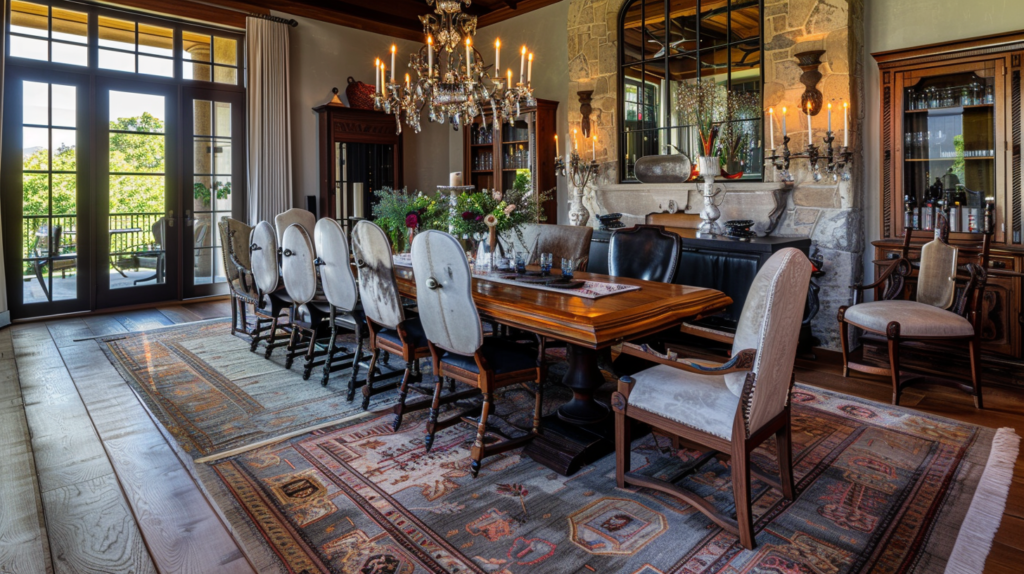
Creating Cohesive and Balanced Eclectic Interiors
Achieving a cohesive and balanced eclectic interior involves careful curation and thoughtful arrangement of eclectic furniture pieces. Here are some tips to help you create a harmonious eclectic space:
Start with a neutral foundation and layer eclectic elements on top. Use a neutral color palette for walls, floors, and larger furniture pieces as a backdrop for showcasing eclectic accents and accessories.
Edit and curate your collection regularly to maintain visual balance. Avoid overcrowding your space with too many eclectic pieces, and opt for quality over quantity to prevent visual clutter.
Pay attention to flow and circulation within your space. Arrange furniture and decor in a way that facilitates movement and interaction, ensuring that your eclectic interior feels both welcoming and functional.
Use rugs, textiles, and artwork to tie eclectic elements together. Incorporate cohesive patterns, colors, and textures throughout your space to create visual continuity and cohesion.
Be mindful of visual weight and balance when arranging eclectic furniture. Distribute heavier pieces evenly throughout your space and use lighter accents to create contrast and visual interest.
Benefits of Eclectic Furniture in Interior Design
A. Flexibility to Reflect Personal Style and Preferences
One of the primary benefits of incorporating eclectic furniture into interior design is its inherent flexibility, allowing individuals to reflect their unique personal style and preferences. Unlike more rigid design styles that adhere to strict guidelines and conventions, eclectic design encourages freedom of expression and experimentation.
With eclectic furniture, homeowners have the opportunity to curate spaces that speak to their individual tastes, interests, and personalities. Whether it’s mixing vintage finds with contemporary pieces or blending cultural influences from around the world, eclectic design offers endless possibilities for customization and self-expression.
This flexibility extends beyond individual pieces to encompass entire interior schemes. Eclectic interiors can seamlessly integrate elements from different styles, eras, and aesthetics, resulting in spaces that feel dynamic, vibrant, and authentically curated. From bold color choices to unexpected furniture pairings, eclectic design empowers individuals to create living environments that truly reflect who they are.
B. Promotion of Creativity and Individuality in Decor
Another significant benefit of eclectic furniture in interior design is its ability to promote creativity and individuality in decor. By breaking free from the constraints of traditional design norms, eclectic interiors encourage out-of-the-box thinking and innovative design solutions.
In eclectic spaces, there are no strict rules to follow or predetermined formulas to adhere to. Instead, homeowners are encouraged to trust their instincts, take risks, and embrace their unique design sensibilities. This emphasis on creativity allows for greater experimentation with color, pattern, texture, and form, resulting in interiors that feel fresh, original, and full of personality.
Moreover, eclectic design celebrates the beauty of imperfection and embraces the eclectic mix of styles and influences. Rather than striving for flawless coordination or uniformity, eclectic interiors celebrate diversity and eclecticism, celebrating the unique quirks and idiosyncrasies that make each space one-of-a-kind.
C. Enhancement of Visual Interest and Character in Living Spaces
Finally, eclectic furniture enhances visual interest and character in living spaces, elevating them from ordinary to extraordinary. By incorporating an eclectic mix of furniture styles, materials, and finishes, homeowners can infuse their interiors with a sense of depth, richness, and texture.
Eclectic furniture serves as focal points and conversation starters, drawing the eye and commanding attention. Whether it’s a vintage statement piece, a bold contemporary accent, or a globally inspired artifact, eclectic furniture adds layers of intrigue and personality to a room, making it feel more curated and lived-in.
Furthermore, eclectic design allows for the layering of textures, colors, and patterns, creating visual depth and dimension. From plush textiles to eye-catching artwork, eclectic interiors engage the senses and invite exploration, ensuring that every corner of the room tells a story and sparks curiosity.
In summary, eclectic furniture brings numerous benefits to interior design, including flexibility, creativity, and enhanced visual interest. By embracing the elegance of eclectic design, homeowners can create living spaces that are as unique and individual as they are, resulting in interiors that feel truly personalized and full of character.
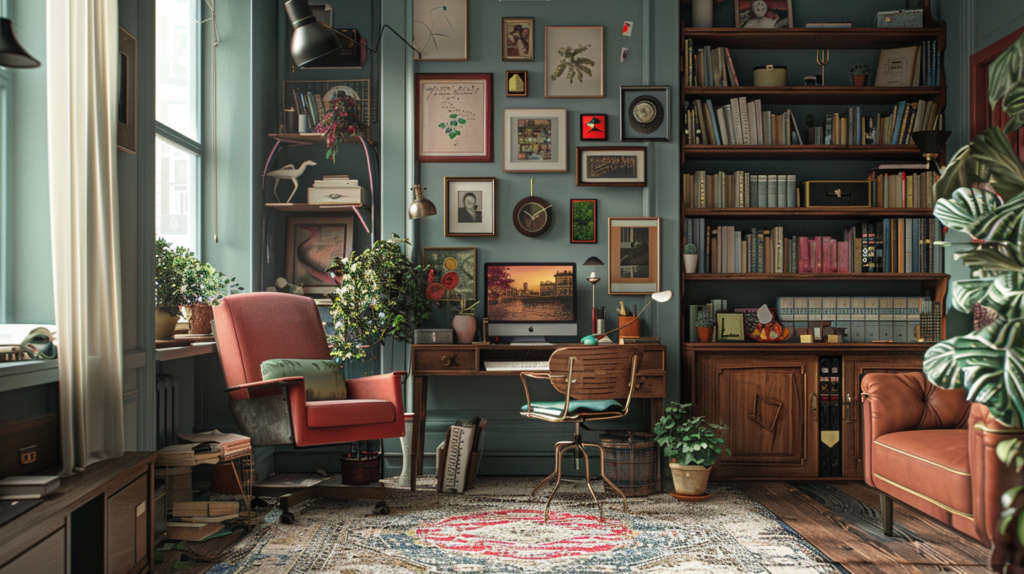
Showcasing Eclectic Furniture in Various Spaces
Living Room
The living room serves as a focal point of the home, making it an ideal space to showcase eclectic furniture and decor. In this area, homeowners can experiment with mixing different furniture styles, textures, and colors to create a dynamic and inviting atmosphere.
Examples of eclectic furniture arrangements in the living room may include pairing a contemporary sofa with vintage armchairs, mixing bold patterns and prints in throw pillows and area rugs, and incorporating eclectic artwork and accessories to add personality to the space. By layering diverse elements and playing with contrast, homeowners can create a visually stimulating yet cohesive living room design.
-

Brabbu
DAKOTA SINGLE SOFA
£6,682 – £9,672 Select options This product has multiple variants. The options may be chosen on the product page -

Brabbu
NIKU FLOOR LIGHT
£6,751 Add to cart -

North West
Prato Large Vase
£162 Add to cart
Bedroom
The bedroom is a sanctuary for relaxation and rejuvenation, and incorporating eclectic furniture can add character and charm to this intimate space. When designing a bedroom with eclectic elements, homeowners can mix and match furniture pieces, bedding, and decorative accents to create a personalized and eclectic look.
For example, pairing a modern platform bed with antique nightstands, layering mismatched bedding in complementary colors and patterns, and incorporating eclectic lighting fixtures and artwork can infuse the bedroom with warmth and personality. Additionally, incorporating eclectic elements such as vintage mirrors, upholstered benches, and eclectic accessories can add visual interest and depth to the space.
Dining Room
The dining room is a gathering place for friends and family, making it an ideal setting for showcasing eclectic furniture and decor. When designing a dining room with eclectic elements, homeowners can experiment with mixing different furniture styles, materials, and finishes to create a unique and inviting ambiance.
Examples of mixing eclectic furniture in the dining room may include pairing a rustic farmhouse table with modern dining chairs, layering patterned textiles such as tablecloths and napkins, and incorporating eclectic lighting fixtures and artwork to add drama and sophistication to the space. By combining diverse elements with cohesive design principles, homeowners can create a dining room that is both stylish and functional.
Home Office
The home office is a space for productivity and creativity, and incorporating eclectic furniture can help inspire and motivate individuals in their work. When designing a home office with eclectic elements, homeowners can mix and match furniture pieces, storage solutions, and decorative accents to create a personalized and inspiring workspace.
For example, pairing a modern desk with vintage filing cabinets, incorporating eclectic shelving units and storage baskets, and layering eclectic artwork and accessories can add character and charm to the home office. Additionally, incorporating eclectic elements such as unique lighting fixtures, upholstered chairs, and vibrant textiles can create a stimulating and energizing work environment.
-

Brabbu
DAKOTA SINGLE SOFA
£6,682 – £9,672 Select options This product has multiple variants. The options may be chosen on the product page -

Brabbu
NIKU FLOOR LIGHT
£6,751 Add to cart -

North West
Prato Large Vase
£162 Add to cart
Practical Considerations for Incorporating
When utilizing eclectic furniture in small spaces, it’s essential to maximize functionality while maintaining an open and airy feel. Opting for versatile pieces that serve multiple purposes, such as a sofa with built-in storage or a coffee table doubling as a desk, helps make the most of limited space. Choosing furniture in proportionate sizes to the room prevents it from feeling cramped, favoring smaller, adaptable items that fit well within the available area. Lighter colors for furniture and decor contribute to a sense of spaciousness, with transparent or visually light furniture like glass tables or open shelving maintaining an unobstructed look. Vertical space should be utilized for storage, employing bookshelves, wall-mounted cabinets, or tall dressers to free up floor space and keep the room organized. Strategic placement of furniture optimizes flow and creates the illusion of more space, taking into account natural pathways and ensuring comfortable movement. Mirrors play a crucial role in reflecting light and expanding the perception of space, whether through mirrored furniture or strategically placed wall mirrors.
To avoid a cluttered appearance, regular editing and assessment of furniture and decor are necessary, retaining only items that contribute to the overall aesthetic and serve a purpose. Furniture with built-in storage options aids in keeping belongings out of sight, maintaining a clean and organized look. When using open shelving, displaying items with intention, grouping similar items, using containers for smaller items, and leaving some shelves empty prevent visual overload and maintain visual balance. Embracing negative space allows eclectic elements to breathe, avoiding overcrowding and ensuring each piece receives the attention it deserves. Consistency in color scheme fosters visual harmony, preventing a chaotic look and promoting a cohesive design.
When balancing modern and traditional elements, it’s essential to emphasize focal points by choosing one dominant style and complementing it with elements from the other. A common color palette spanning both styles creates unity, while consistent material choices harmonize the design. Bridge pieces, combining modern and traditional elements, help smooth the transition between contrasting styles, ensuring a cohesive overall look. Mixing accessories, such as artwork, lighting fixtures, or decorative items, from both modern and traditional styles ties together the design, creating a cohesive and balanced aesthetic.
-

Brabbu
DAKOTA SINGLE SOFA
£6,682 – £9,672 Select options This product has multiple variants. The options may be chosen on the product page -

Brabbu
NIKU FLOOR LIGHT
£6,751 Add to cart -

North West
Prato Large Vase
£162 Add to cart
Embracing the elegance of eclectic furniture allows homeowners to create interiors that are as unique and diverse as they are. By celebrating individuality, creativity, and self-expression, eclectic furniture empowers individuals to design spaces that reflect their personalities, lifestyles, and passions, making every room truly one-of-a-kind.

